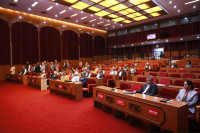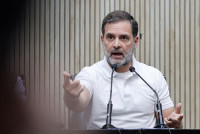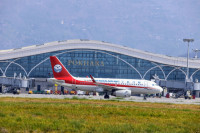Opinion
Infrastructure and development
Fast-track road can be completed on time if the political parties do not interfere
Jagannath Adhikari
When KP Oli’s government recently announced that Nepal would build a fast-track road by itself, it triggered a debate on the modality of building this road. Social media and print media have been carrying opinions expressed by politicians and technical experts. This debate should have started a long time ago, especially after 2008 when a base study for the project was conducted. Still, it is a good practice to have discussions of this type.
I am not an engineer, so I cannot give an opinion on technical details. But I have worked as a consultant in matters related to social development and institutional aspects of infrastructure development. I have worked with engineers and other technical experts on various road and hydropower projects, including this fast-track road and the upper Tamakoshi hydropower development project.
Spillover effects
As a social development specialist, my role was to suggest approaches to make the benefits of physical infrastructures reach various marginalised sections of society and reduce risks the infrastructures can pose to vulnerable groups. Physical infrastructures alone cannot bring positive impacts in society. A proper social-economic condition needs to be prepared to derive maximum benefits out of infrastructures like roads or other transportation facilities.
After visiting the Upper Tamakoshi project site and interacting with various stakeholders to understand their interests, I had felt that it would be best if the Nepal government itself undertook the whole project. The local population had expressed much interest in getting involved in the construction, buying shares, working in the project, and benefiting from the construction phase itself. It fact, the marginal sections of society mainly take the spillover effects of the infrastructure projects, and usually they eye to take advantage of these benefits. Therefore, more concerted efforts are required to shape the provisions in regulations and policies to ensure that benefits directly reach the marginal sections in the command area of the infrastructure projects.
Fortunately, the government decided to undertake the Upper Tamakoshi project independently, despite interests from various foreign companies. Now, it is about to be completed. I am sure this experience will build the confidence of Nepali technicians and managers to undertake such projects in the future.
The fast-track
My very short involvement in the fast-track road study was more of a learning exercise about how the expressway works. An Australian engineer, who was the team leader of the initial study in 2008, explained to me how it is different from other general roads. In casual interactions, I used to tell him and others that we needed to explore more functional and cost effective perspectives rather than a symbol of an ultra-modern road that would make Nepal the first country in South Asia to have such a road.
For me personally, 10 or 15 minutes of extra travel time is not that important if the road can be built and managed with our own technical and other expertise, has more positive local impact and is environmentally friendlier. My hunch is that an economic analysis might also lead to the same conclusion. But, of course, there has to be some room for improvement in the future.
I do not know how far these ideas were incorporated in the base report; a few might have been included. For example, I argued that tunnels should be avoided as far as possible because they require guaranteed light and high maintenance. Later on, the team leader told me that they have proposed only shorter tunnels so that natural light would also make them operational.
While there is not much need to question the urgency and usefulness of this road, the main debate is about the modality of building it. The road to be built through the BOOT system may not be suitable from economic and social perspectives. If the government guarantees the minimum revenue of Rs15 billion per year for 25 years, arranges soft loan to build it and provides other supports to the contractor, then the contractor is not investing anything from its side and is not taking any risk a commercial company should be taking.
In such a situation, it will be worthwhile for the government to build it by itself. If the government allocates Rs30 billion per year for three years, that will cover the the finance for the project. And it is safe to assume that the government can afford to invest this much money from its own coffers, given the budget surplus Nepal maintains every year. Nepal’s private companies may not have the technical capacity to construct this road, but they can use the expertise from foreign companies whenever required. Even the proposed foreign company, which was interested in the project, does not have the required expertise, anyway.
Biased views
Opinions expressed by leaders, planners and technicians in this matter are mostly politically aligned to the parties they have allegiance to. Debate on such a sensitive issue should be based on facts, figures and one’s conviction or interest in what development should be. But because of the influence of political parties on our opinions, this does not seem to be the case with any discussions on development projects. Precisely because of this reason, many of the infrastructure development projects have been delayed or have become less effective, and have delivered low quality outputs. If all the political parties agree to develop an independent company or authority for the construction of the proposed fast-track road, and to not interfere with its workings, there is no reason why this project cannot be completed well in time.
Adhikari is a human geographer with an interest in development planning




 10.12°C Kathmandu
10.12°C Kathmandu










